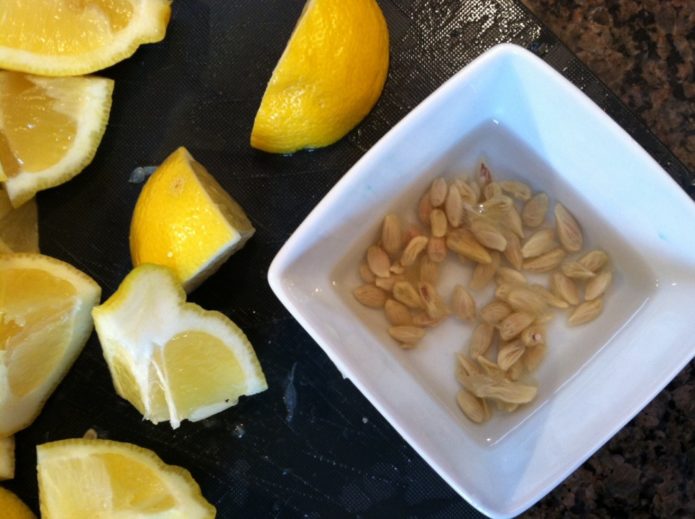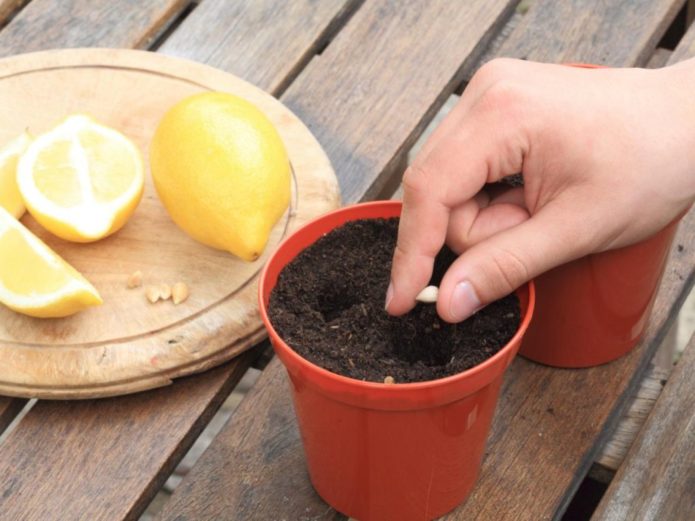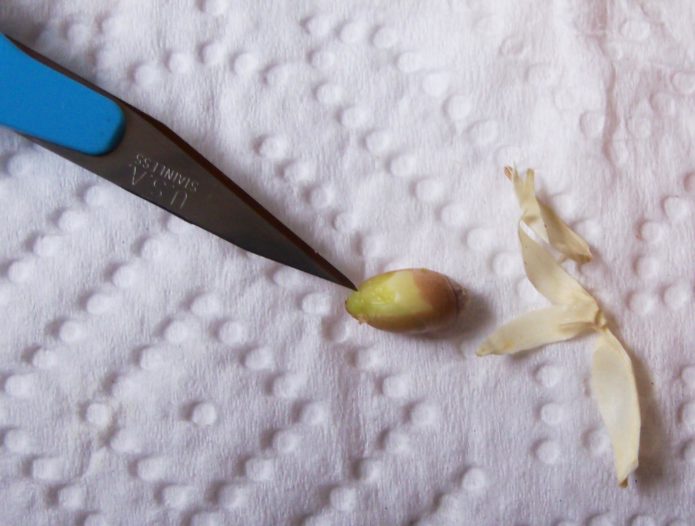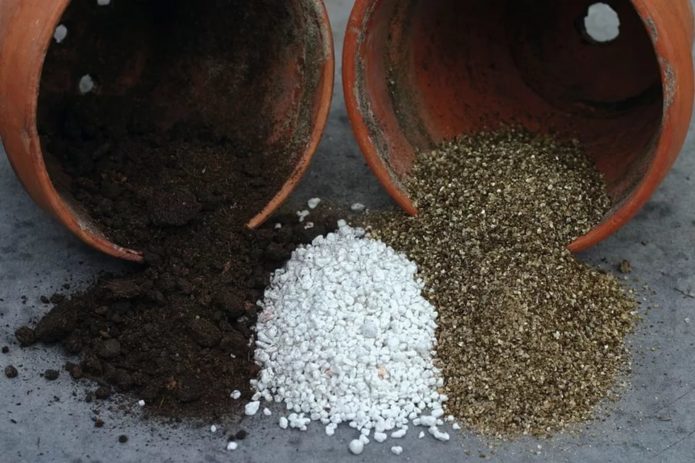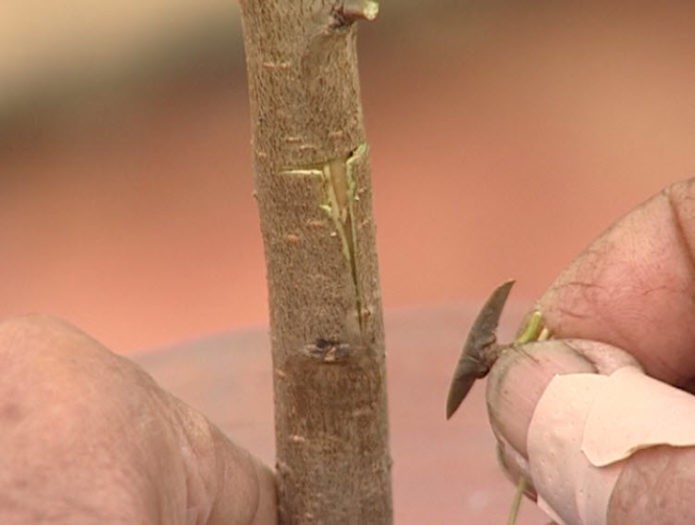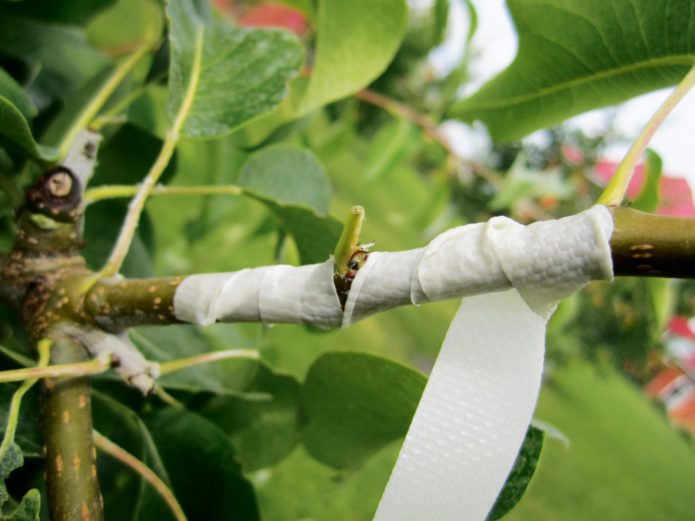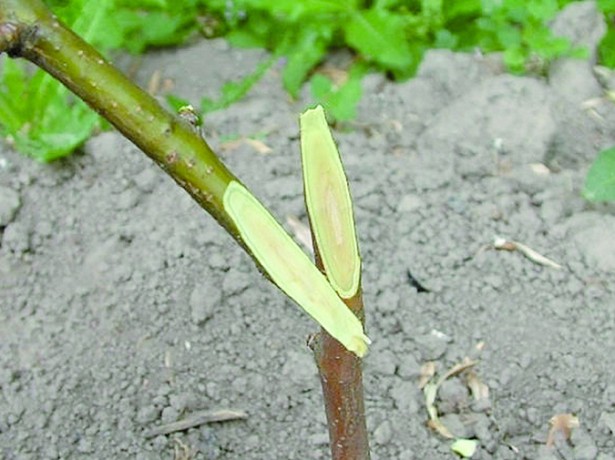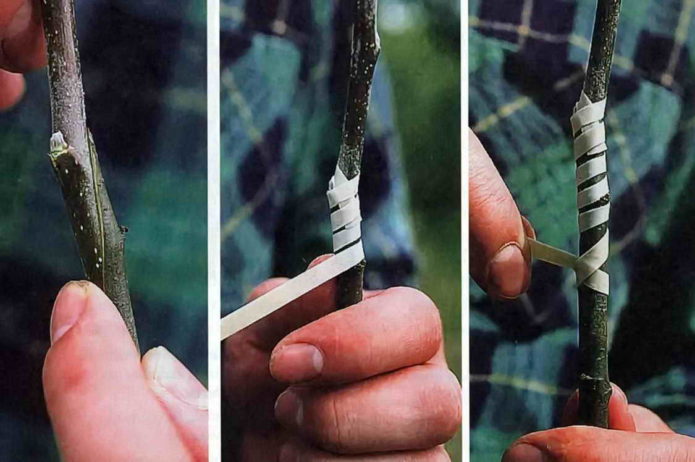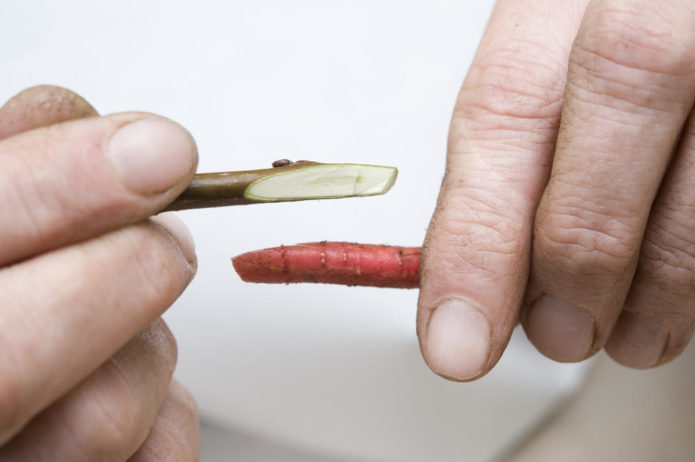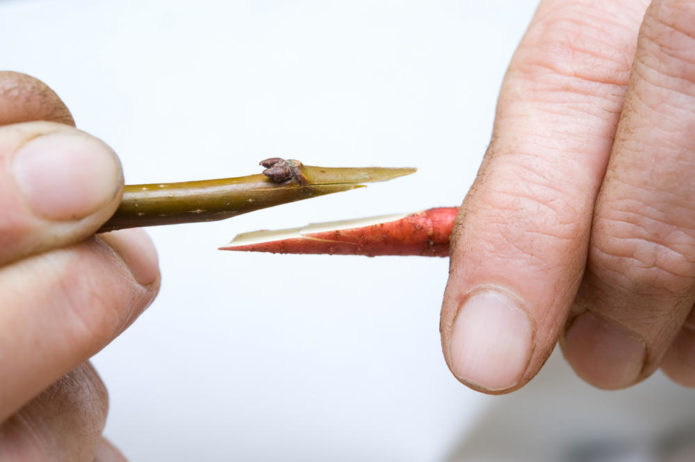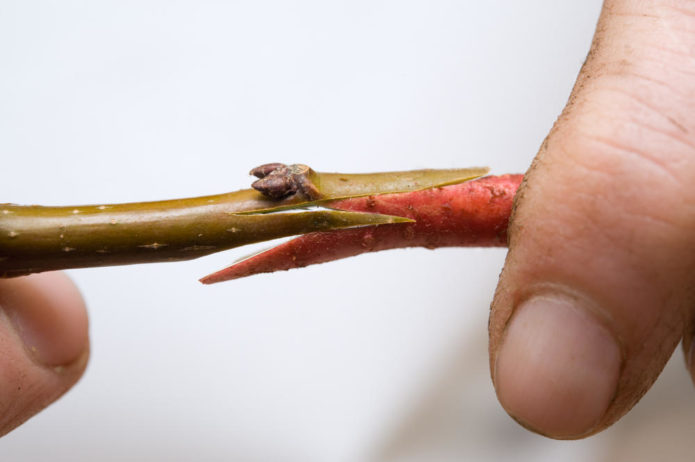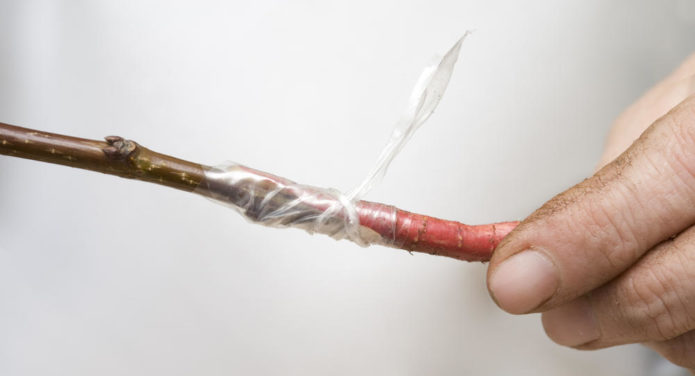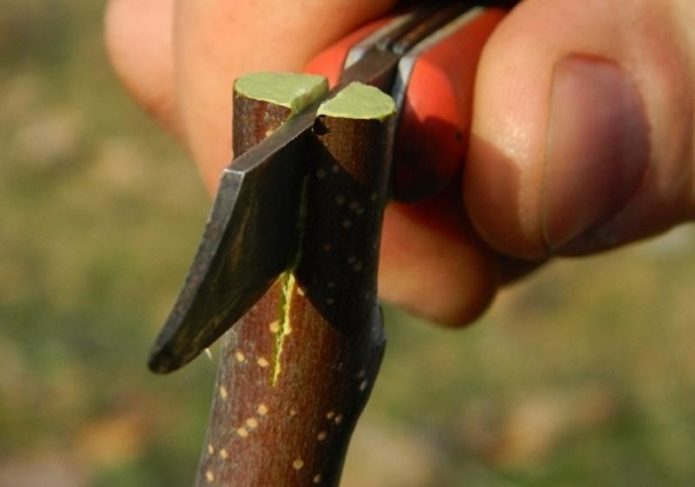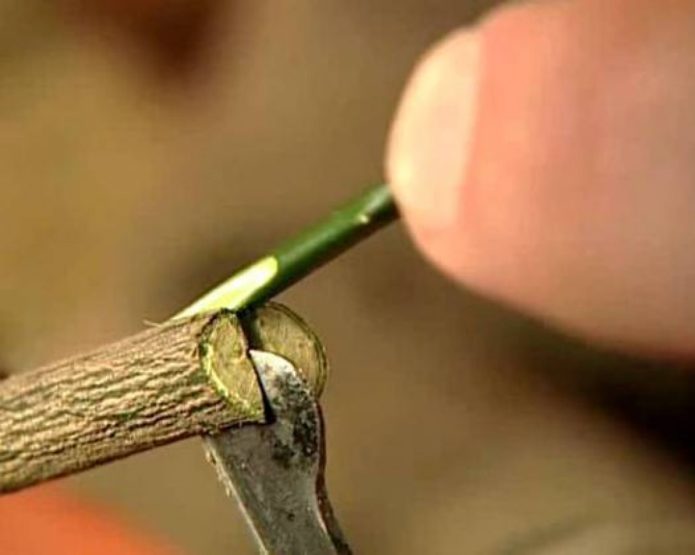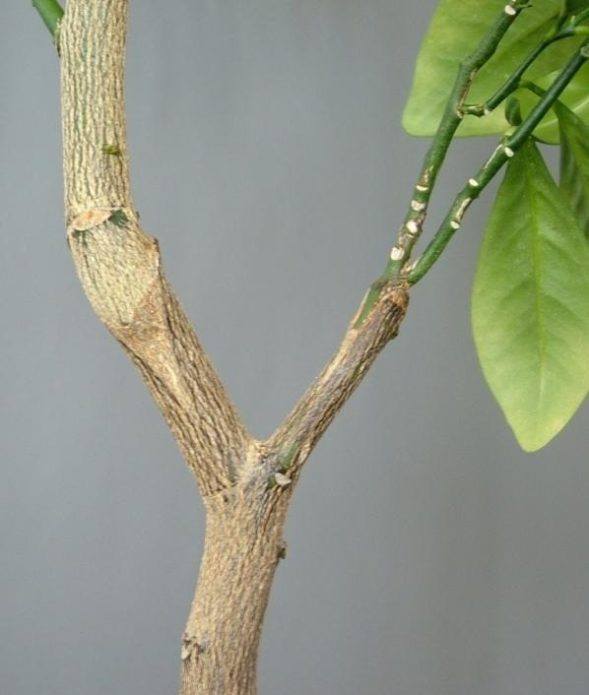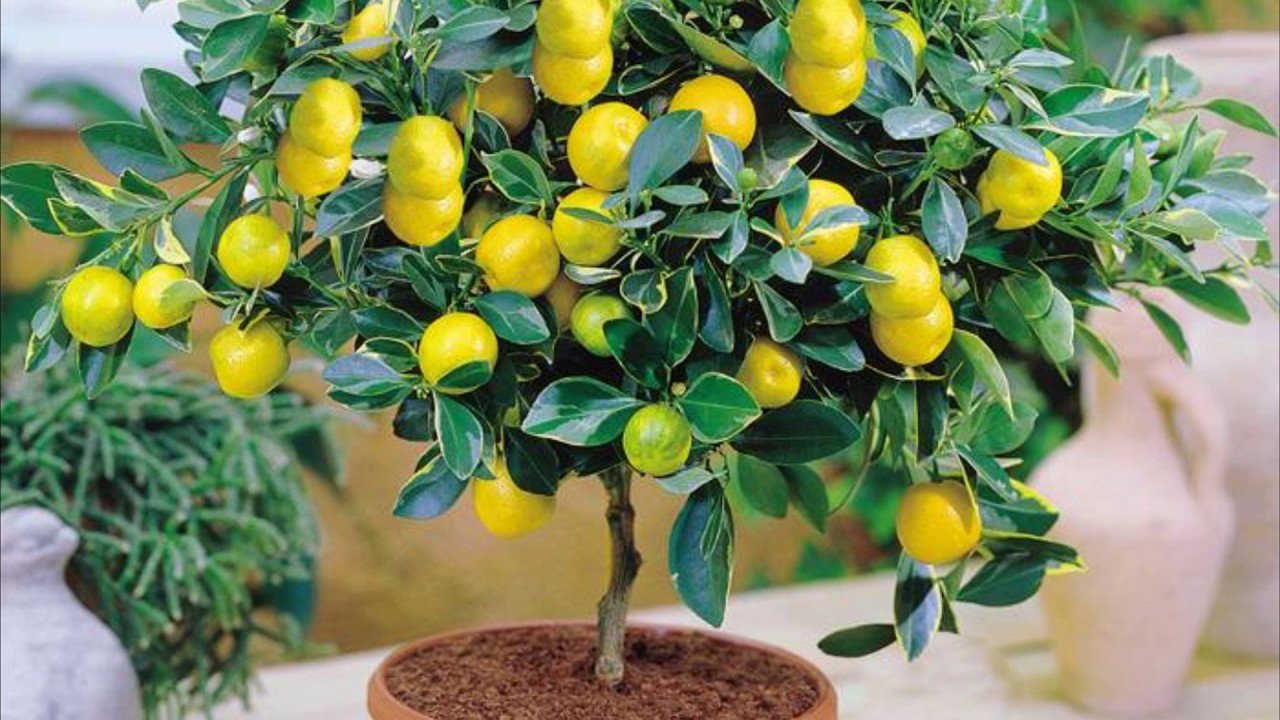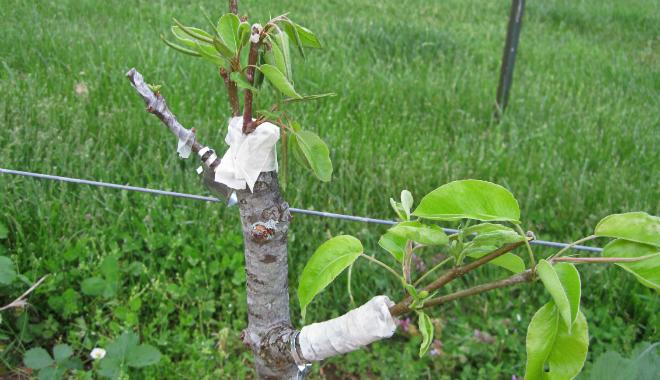Growing a lemon in the open field in our climatic conditions is an impossible task. But you can grow a lemon tree in your room, because citrus fruits have long been used as indoor plants. So why not decorate a corner of your apartment with this wonderful tree? After all, you can buy everything you need for this in the supermarket.
Content
Is it possible to grow a lemon from a seed at home
Lemon is a unique and useful plant in every way. The fruits contain a large amount of vitamin C, which is indispensable for colds and for boosting immunity. The lemon scent improves mood, invigorates and gives vitality. And an evergreen tree, both during flowering and during fruiting, gives incredible aesthetic pleasure.
In a flower shop, lemon is very expensive, and not everyone can afford to buy the cherished tree. And how do you want to have such beauty at home. There is an exit. And it lies, no, not on the surface, but inside. Inside a lemon. This is, of course, a bone.
Growing lemon from seed is a fun activity. Surely many will say that this is quite difficult to do, because the plant is exotic. In fact, there is nothing complicated about it. And now you will see for yourself.
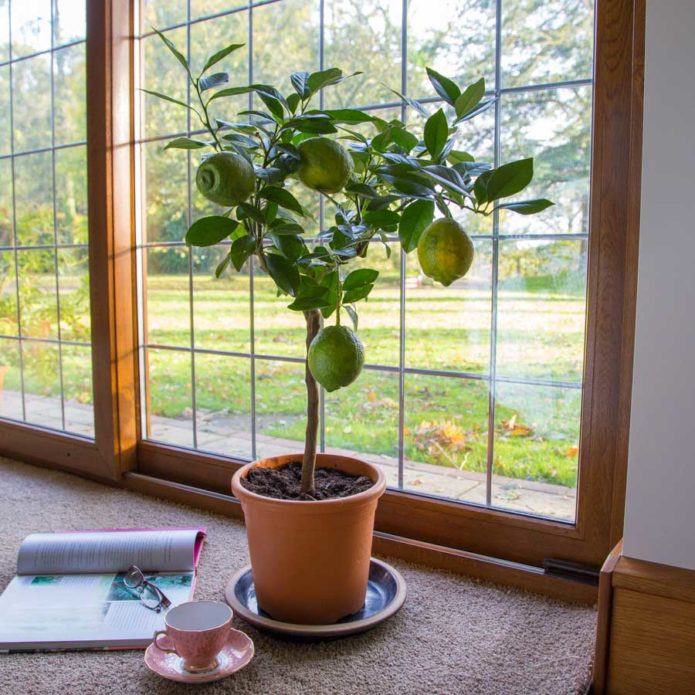
Having grown a lemon from a seed, you can not only admire its appearance, but also receive benefits for the body
Selecting seeds for planting
Buying a lemon is not a problem now. But if you decide not only to drink tea, but also to collect seeds, choose the most beautiful and ripe fruit. In green lemon, seeds are immature, spoiled fruits are also not an option.
Cut the lemon in half and remove the seeds. This is easy to do with a teaspoon. Do not forget to substitute a plate, because there will be a lot of juice. From the collected seeds, select the largest, whole, correct shape.
And now - the main nuance. The collected seeds must be sown immediately into the soil. If they sit for a while and dry out, the chance of getting seedlings decreases. Therefore, if you have not prepared the container and soil, do not rush to remove the seeds.
Preparation of planting material
The preparation period for lemon seeds for planting is very fast.
- try to collect 10 or more seeds so that you can leave the strongest plant for further growing;
- rinse the seeds under running water;
- to accelerate germination, soak the planting material in a growth stimulator - Zircon or Epine-Extra. Soak the seeds for 12 hours in a solution made from 250 ml of water and one drop of any drug.
Seed planting process
Planting lemon seeds is very easy.But in order for the planted seeds to germinate quickly, it is necessary to create suitable conditions for them.
It is best to plant the seeds in separate small containers. These can be seedling pots or disposable cups. Light soil is needed for germination. You can use coarse sand, pre-washed and calcined. A special substrate for citrus fruits is often purchased, but sand or vermiculite must be added to it for greater friability.
- Bury the bone in a moistened substrate - 1, 5 - 2 cm.
- Cover the containers with a bag or glass jar to create a greenhouse environment inside, and place in a bright and warm place.
- The temperature should not fall below 18 ° C. Control humidity with daily ventilation. Water only when necessary - waterlogged soil can cause root rot.
- Seedlings appear within a month.
With the appearance of the first shoots, do not rush to remove the shelter. Do this gradually so that the seedlings become accustomed to the room temperature. When the lemon has 3 - 4 true leaves, transplant the plant into a new container.
Planting lemon seeds - video
Useful Tips
- You can plant several lemon seeds in one container. But try to keep them no more than 3 - 4. With a strong thickening, the picking process may fail.
- Sowing seeds is best at the end of winter. By the time the seedlings appear, daylight hours will increase significantly and the seeds will not have to be additionally highlighted.
- The optimum temperature for germination is 22 - 25 ° C.
Few people know, but there is another way to grow lemon from seed. But you need a sharp eye and a steady hand to do it.
- Using a sharp knife with a thin blade, the hard protective shell is removed from the lemon seed. This must be done so carefully so as not to damage the inside of the seed.
- After that, the extracted inner part is placed between 2 layers of damp cloth, and a plastic bag is put on top. Leave in a bright and warm place.
- After 5 - 7 days, the rudiments of roots and cotyledons appear. In this form, the grain is planted in the soil mixture.
Soil and container for lemon
In nature, lemon is tolerant of soils, so lemon groves can be found even in areas with poor sandy soil. But at home, it is advisable to plant seeds in special soil mixtures. These can be purchased at a flower shop, but are best done by yourself.
Ground requirements for planting
Lemon root has no absorbent hairs, which makes it difficult to absorb nutrients from the soil. The soil mixture should be well-friable, consisting of small particles, it should be perfectly permeable to moisture and oxygen.
Lemon will thrive best in neutral soil. Therefore, the acidity of the composition should be in the range of 5.5 - 7 pH. Acidic soil can be neutralized with chalk. If the composition is alkaline, then it needs to be slightly acidified with a solution of 1 tablet of ascorbic acid per 1 liter of water.
The main components for the soil mixture
- 2 pieces of leafy land. Soils taken from areas where linden, aspen or hazel grow are preferred. It is not recommended to take from under a nut or oak - in such a soil there is too much tannins, which interfere with the normal development of the plant. Coniferous soil is very acidic;
- instead of leafy land, you can use sod, by the way, it is considered more nutritious. A 10 cm layer of soil from an area where clover or nettles grow is best. The soil must be sieved well so that large particles do not get into the composition;
- 1 part rotted horse or cow manure;
- 1 part coarse sand;
- 0.5 parts of charcoal, preferably birch or alder. This component, due to its high porosity, will help protect the soil from waterlogging and acidification.
All components of the mixture must be mixed well and disinfected.
A container for planting lemon can be made of any material - plastic, ceramics, and wood will work equally well. Despite the fact that there is an opinion about growing lemon in large containers, do not rush to purchase spacious pots. In order for a lemon tree to grow strong, it needs to be replanted every 2 to 3 years. Mature trees suspend growth slightly, so they are replanted every 3 to 4 years. In this case, the size of the new pot should exceed the previous one by 4 cm. If the plant is in a tub, then the size of the new one can be increased by 8 cm. The main requirement for a container for planting and transplanting a lemon is the presence of drainage holes. Don't forget the drainage itself.
Since transplanting is stressful for any plant, use the transhipment method. This will protect fragile roots from injury, and the plant from stress.
Lemon step-by-step
- At the bottom of the selected container, fill a layer of drainage with a layer of at least 3 - 4 cm. Then a little soil to cover the drainage.
- In order not to damage the roots, water the plant a few hours before transplanting. When removing, hold the lemon by the stem and tap the pot against the edge of the table.
- Carefully remove the lemon from the pot and transfer to a new container.
- Holding the plant by the stem, add soil to the sides of the pot to fill any voids. Lightly compact the soil with your hands.
- Pay attention to the fact that the root collar (the place where the roots begin to grow) after transplantation should remain at the same level, that is, the plant cannot be buried or planted too high.
- After transplanting, pour the lemon into the tray so you don't accidentally flood the plant. Water as usual one week after transplanting.
Lemon transplant - video
Will seed-grown lemon bear fruit
In addition to admiring decorative greenery and delicate fragrant flowers, I also want to collect fruits from a lemon tree. If you follow the rules of agricultural technology, then in 5 - 7 years (at best) you will wait for fruiting. But there is a way that will almost halve the waiting time for the harvest - this is grafting. It can be done in three ways, which are carried out only in the warm season - in summer or in late spring.
If a lemon grown from a seed serves as an excellent basis for grafting, that is, a stock, then the scion should be taken from an already fruiting lemon.
Budding
The purpose of the procedure is to graft a kidney that is ready for growth. Budding is carried out at the end of April - May.
- A vertical T-shaped incision up to 4 cm is made on the selected shoot or section of the trunk using a sharp knife. The edges of the cut are slightly bent.
- Then the kidney is inserted, cut with a sharp knife, together with a small area of the cortex and cambial layer (up to 2 mm). The size of the scion should be equal to the size of the rootstock cut. Be sure to leave the petiole. It will be convenient for him to hold the scion during the procedure.
- After the procedure, the vaccination site is tightly wrapped with inoculation tape, but the kidney is left open. The tape is removed when the cambial layers take root, and the scion grows a few centimeters. Additional care of the vaccination site is not required.
As an experiment, up to 3 buds can be grafted onto one stock, placing them on different parts of the trunk. A petiole will tell you about a successful operation. If everything is in order, it will turn yellow. If the petiole turns black, then the operation has failed.
Budding indoor lemon - video
Simple copulation
This method requires the scion and rootstock to be the same thickness.
- In the grafted areas of the plant, you need to make oblique cuts at an angle of 30 °. On the scion, an oblique cut is made, having previously retreated from the lower bud by 1 cm down.
- Attach the slices to each other so that the plant tissues match.
- After that, the two parts must be tightly wrapped with a special tape for inoculation. It is important that the grafted parts do not move, otherwise the tissues will not grow together.
- The winding is carried out with an overlap so that there are no gaps.
- If after 2 weeks the kidney begins to develop, the process was successful.
If this is your first time copulating, practice making the correct cut on unneeded branches.
Improved copulation
- The rootstock and scion must be the same thickness.
- First, an oblique cut is made on both branches, as with simple copulation.
- But before connecting the stock and the scion, make additional longitudinal cuts on both branches, stepping back 1/3 from the top of the cut. The depth should be up to 1 cm. Thus, tongues are obtained for better fixation of the rootstock and scion.
- After that, the two parts to be grafted are tightly connected to each other using the formed tongues.
- After the procedure, the vaccination site is wrapped with an overlap tape.
Cleft grafting
This procedure is considered one of the simplest and most versatile.
- The stem of the lemon selected as the rootstock is cut vertically (it is recommended to use plants with a stem diameter of at least 6 mm).
- Then, using a sharp knife, make a vertical incision up to 2 cm deep.
- A stalk taken from a fruiting lemon is inserted into it. The lower part of the cutting is cut from both sides in the form of a wedge. The graft is inserted into the split so that the cambial layers coincide.
- The rootstock cut is covered with garden pitch and the junction of the two parts is wrapped with a special tape or film.
- After the scion begins to grow, the tape is first weakened, and then removed altogether. The vaccination site should be protected from intense sunlight until it is completely overgrown.
During the operation, try not to touch the cut of the cutting with your hands, so as not to inadvertently infect the scion. For the same reason, all instruments must be pre-disinfected.
Lemon grafting - video
It is very easy to grow a lemon from a seed at home. But to make it bear fruit, you need to master an almost surgical procedure - inoculation. However, there is nothing complicated in it, and, having tested one of the methods, you can soon enjoy the fruits of your labor.

